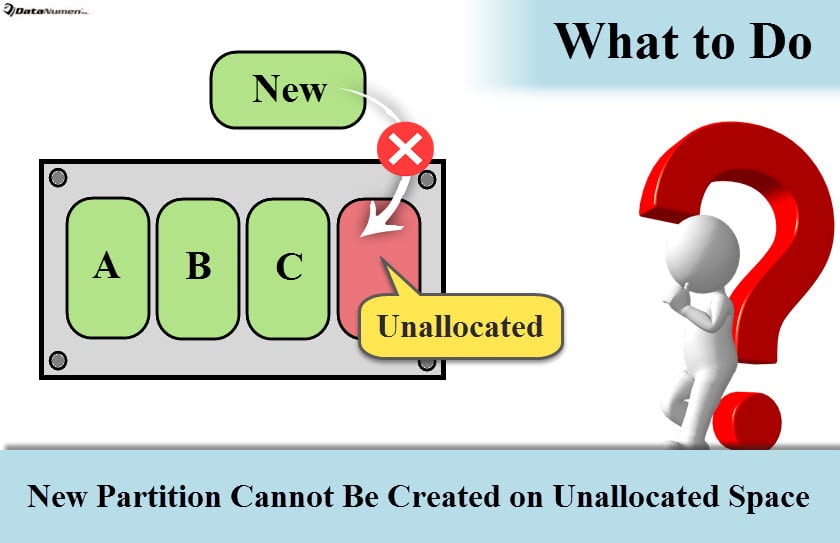Many users have experienced such a problem – they cannot create a new partition on unallocated space in the drive. Now, this article will provide a quick guide about what to do in such a case.
Unallocated space in a hard drive is actually a space which is not formatted and not being used. Therefore, in face of such a space, users tend to initialize it into an actual new partition on it. However, in this process, many users fail. Therefore, in the followings, we will focus on this problem to expose how to tackle it. If you are confronted with such an issue as well, please read on.

1. Remove Peripherals
At times, your inability to create new partition on the unallocated space is due to peripherals connected at the same time, such as external drive, USB flash drive or memory card, etc. Under this circumstance, you can disconnect all external drives from the USB port of your computer. Afterwards, attempt to create new partition on unallocated space. If you still fail, move on to the next step.
2. Check Drive Size & Format
Then, you would be required to check the drive size and format. There are two hard drive formats – Master Bootable Record (MBR) and GUID Partition Table (GPT). MBR only supports the maximum capacity with 2TB and up to 4 primary partitions. But GPT can support much larger space than MBR and it has no limit in the number of primary partitions.
Thus, in this step, you need to make sure drive format and size. Is it MBR or GPT? If it is MBR disk, does it exceed 2TB? To be honest, most of time, being unable to create new partition on unallocated space is due to MBR format. In this case, you can convert MBR to GPT.
3. Convert MBR to GPT
If your computer system is not Windows XP, you can convert the MBR to GPT. As for methods, you can make use of inbuilt “Disk Management” tool or an external utility. But before conversion, you have to back up your drive data in that it will erase the drive, which will lead to data loss.
4. Recreate after Merging Partitions
Provided that there have been 4 primary partitions on your MBR drive, but you don’t want to convert MBR to GPT, you can merge two partitions into one. Then, create a new partition on the unallocated space. Likewise, so as to avoid data loss or corruption such as damaged PST file, you need to back up drive first off.
5. Rebuild Partitions after Erasing Drive
Moreover, if you think that the two methods above are complex for you, you can opt to directly rebuild partitions after erasing drive. To be specific, after backing up drive, you can wipe and erase the drive thoroughly, and then recreate all the partitions as per your needs.
Author Introduction:
Shirley Zhang is a data recovery expert in DataNumen, Inc., which is the world leader in data recovery technologies, including mdf repair and outlook repair software products. For more information visit www.datanumen.com